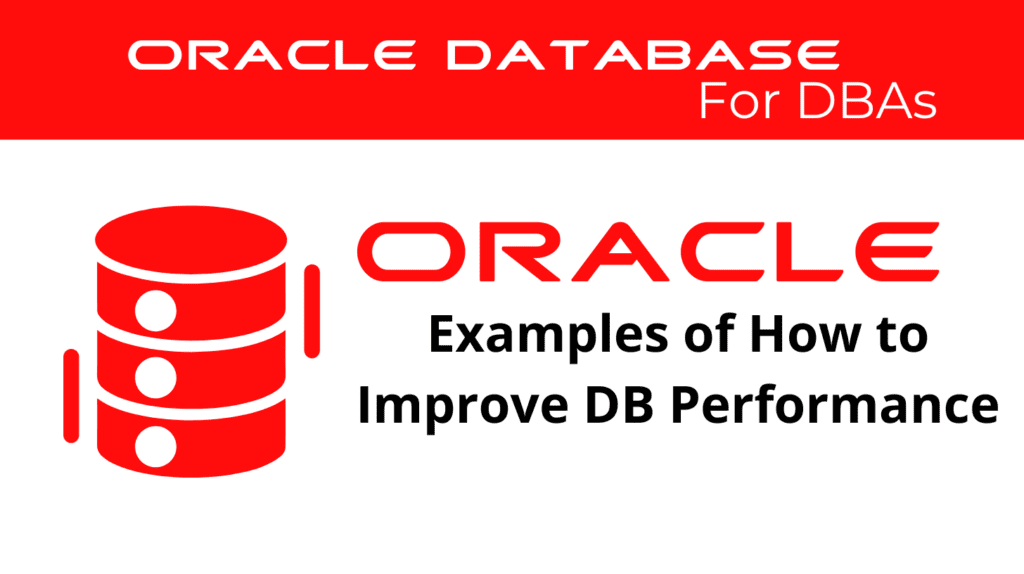
Improving the performance of Oracle Databases is crucial for ensuring optimal functionality and user satisfaction. This blog will explore practical cases of Oracle Database performance improvement, detailing the strategies employed and the results obtained. Additionally, we will discuss how Oracle Database is utilized in different industries and sectors.
Oracle Database Performance Improvement Techniques
Oracle Database performance improvement involves various techniques aimed at optimizing database operations. Key strategies include indexing, partitioning, and query optimization.
Indexing is a technique used to enhance the speed of data retrieval. By creating indexes on frequently queried columns, DBAs can significantly reduce the time it takes to access data. However, it’s important to balance the number of indexes to avoid performance degradation.
Partitioning helps manage large tables by dividing them into smaller, more manageable pieces. This approach improves query performance and simplifies maintenance tasks. Partitioning strategies can be based on range, list, or hash, depending on the data and query requirements.
Query optimization involves refining SQL queries to ensure they run efficiently. This can be achieved by rewriting queries, using hints to influence the execution plan, and ensuring that queries are properly indexed. Understanding the execution plan is crucial for identifying and addressing performance bottlenecks.
Practical Cases of Performance Improvement
There are numerous practical cases where Oracle Database performance improvement techniques have led to significant enhancements. For example, a financial institution implemented advanced indexing and query optimization techniques, resulting in a 50% reduction in query execution time.
In another case, a healthcare provider utilized partitioning to manage large patient data tables. This led to a 40% improvement in data retrieval speed, enhancing the efficiency of their electronic health records (EHR) system.
A retail company optimized their Oracle Database by using query optimization and indexing. This resulted in a 30% improvement in transaction processing times, leading to better customer satisfaction and streamlined operations.
📢 You might also like: Oracle 19c Basic Tuning Methods and Diagnostics (Category: Performance Management and Tuning)
Enhancing Oracle Database Performance in Different Industries
Oracle Database is widely used across various industries, each requiring specific performance optimization strategies.
In the finance sector, Oracle Database manages large transaction volumes and ensures data integrity. By implementing advanced indexing and query optimization techniques, financial institutions can improve transaction processing times and data retrieval speeds.
In the healthcare industry, Oracle Database supports EHR systems, allowing providers to access and manage patient data efficiently. Performance improvement techniques such as partitioning and indexing can enhance data retrieval speeds, leading to better patient care and operational efficiency.
In the retail sector, Oracle Database helps manage inventory, customer data, and sales transactions. By optimizing queries and indexing frequently accessed data, retailers can improve transaction processing times and customer satisfaction.
Advanced Strategies for Performance Enhancement
Beyond basic optimization techniques, advanced strategies can further enhance Oracle Database performance. These include using Oracle Real Application Clusters (RAC) and in-memory processing.
Oracle RAC allows multiple database instances to run on different servers, providing high availability and scalability. This ensures continuous availability and load balancing, making it suitable for mission-critical applications.
In-memory processing involves storing data in memory rather than on disk, significantly improving query performance. Oracle’s in-memory option allows DBAs to perform real-time analytics and accelerate transaction processing.
Performance tuning is an ongoing process. Regular monitoring and proactive adjustments are essential to prevent performance issues and maintain optimal database performance. By staying informed about the latest strategies and tools, DBAs can ensure their Oracle Databases are always performing at their best.
See more on Oracle’s website!
Conclusion
In conclusion, improving Oracle Database performance is essential for maintaining efficient and effective database operations. By leveraging techniques such as indexing, partitioning, and query optimization, as well as advanced strategies like Oracle RAC and in-memory processing, DBAs can ensure optimal performance. Regular monitoring and proactive tuning are crucial to preventing performance issues and achieving better business outcomes and user satisfaction.
Be Oracle Performance Management and Tuning certified, this world is full of opportunities for qualified DBAs!





